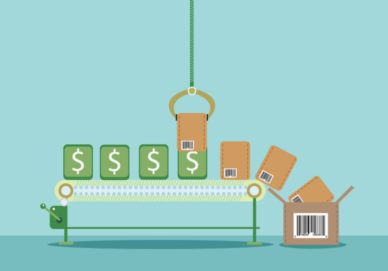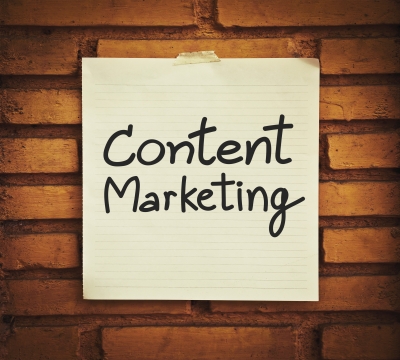Managing content isn’t easy, especially when you have plans to scale your operation.
Without a rock-solid process, the addition of new topics and writers will only compound the issue. Before you can expand, you need to invest in the process itself.
In this post, I’ll show how it’s possible to optimize your content workflow by using Insightly projects and automation.
Map Your Content Pipeline
We marketers aren’t always the most methodical people. Writing a blog post or designing a brochure just comes naturally. But, mapping out an automated content workflow? That sounds a little scary.
With the right tools, building a content pipeline isn’t as intimidating as it first seems. In fact, a tool like Insightly can even make things kind of fun. To get you up to speed, here’s a quick video on how Insightly pipelines work:
Since Insightly is more than just a sales CRM, you can use pipelines to create predictability in your content production. Before spending too much time in Insightly, however, you’ll want to first study how your team currently does things. Here are some questions to consider:
- Do blog posts, landing pages, and other web assets follow the same sequential pattern?
- If they differ, should you consider creating separate pipelines for each type?
- What specific phases does each piece go through during production?
- As an item passes into a new phase of production, are there specific tasks or actions that always occur during that stage (such as obtaining sign offs or publishing a piece)?
Work closely with your team to map out the “guts” of your content workflow. It might even make sense to host an in-person meeting during which ideas are thrown onto a whiteboard for easy visualization. Investing this time upfront will help you avoid significant changes later on.
Set Things Up
After studying your current process, it’s time to get busy in Insightly. For the sake of discussion, let’s imagine that your team decides it needs three unique pipelines for:
- Blog articles
- Landing pages
- Other web pages
Since most of what you crank out is blog related, you decide to focus on that pipeline first (wise decision!). To set it up in Insightly, you’ll just jump over to your pipeline settings page. If this is your first pipeline, there won’t be anything listed under “pipeline name.” Give your new pipeline a name, check the “for projects” box, and click “add pipeline.”

Once added, you’ll then want to add your stages. To do this, click “edit stages” and key in your desired production phases. Here’s a very simple example that might make sense for your business:

Congratulations! You’ve just added your first content production pipeline. When that next blog post idea pops into your head, simply add a new Insightly project that utilizes this same pipeline.

Automate Each Step
As you were adding pipeline stages, you might have noticed a drop-down option for activity sets. In case you’ve never heard of activity sets, here’s a quick overview of how they work:
In short, as a content piece moves into a new stage of production, Insightly can automatically create and assign batches of tasks or events.
By now, your brain is probably racing with all of the possibilities. For example, when items are moved to “pitch,” Insightly can do the following for you:
- Assign a task to your assistant, Rhonda, reminding her to create and attach a blank collaboration document (within one business day)
- Create a task to pitch the article within a week (manually assigned later)
- Create a placeholder task for the writer to request pitch approval
Creating an activity set only takes a couple minutes, and it can easily be linked to your pitch stage:

Voila! By linking an activity set to the pitch phase, you’ll ensure that your team (yourself included) avoids overlooking important steps. Each new content piece (aka an Insightly project) is updated with the steps necessary to complete the pitch.

In reality, the pitch phase is probably not the only stage of your content production that could benefit from activity sets. Linking additional activity sets to other pipeline stages can be wise; just don’t try to overdo it. Consider gradually phasing in activity sets and testing each one individually. Few things are more aggravating than automation that creates more confusion than clarity.
Embed Work Instructions into the Process
Auto-assigning tasks is a step in the right direction. But, doing so isn’t a guarantee that the work will be done to your desired level of specification.
Increase the quality of your team’s work output by embedding work instructions into the process. Take, for example, the task that reminds Rhonda to create a blank document. You’ve shown her how to access the shared drive, find the correct folder, copy the template, and use the correct naming structure. With everything else on her plate, however, she sometimes skips a step or two by mistake.
To remedy this problem, update the task template to include a bulleted list of steps. Rhonda will appreciate the helpful reminder when new pitch requests arrive. You’ll appreciate not having to continuously repeat yourself.

Measure Your Production
Insightly also makes it easy to monitor content cycle times, bottlenecks, and other important productivity metrics. Just hop over to your project reports and filter for items within the blog pipeline. Insightly instantly returns a list of sortable content pieces, including those that you’ve recently completed. Drag and drop column fields to slice and dice status information, cycle time data, linked author profiles, and much more.

As your content backlog grows, Insightly’s charting features become increasingly helpful. For example, with a few clicks, the previous table can be converted into the following chart, displaying a visual representation of your content allocation (by status).

No more pivot tables or complicated spreadsheets. Everything you need to track is at your fingertips in Insightly.
Get Scalin’
Each new article magnifies the inefficiency of your current (broken) workflow. It’s time you took the next step and leveraged Insightly’s project management features for the betterment of your marketing team.
Click here to build your first content pipeline in Insightly!

Matt Keener is a marketing consultant and President of Keener Marketing Solutions, LLC. Matt specializes in content marketing and strategic planning, having helped numerous Saas (software as a service) companies and other small businesses worldwide. Read more of Matt’s work, check out his book, or connect with him on Linkedin.





